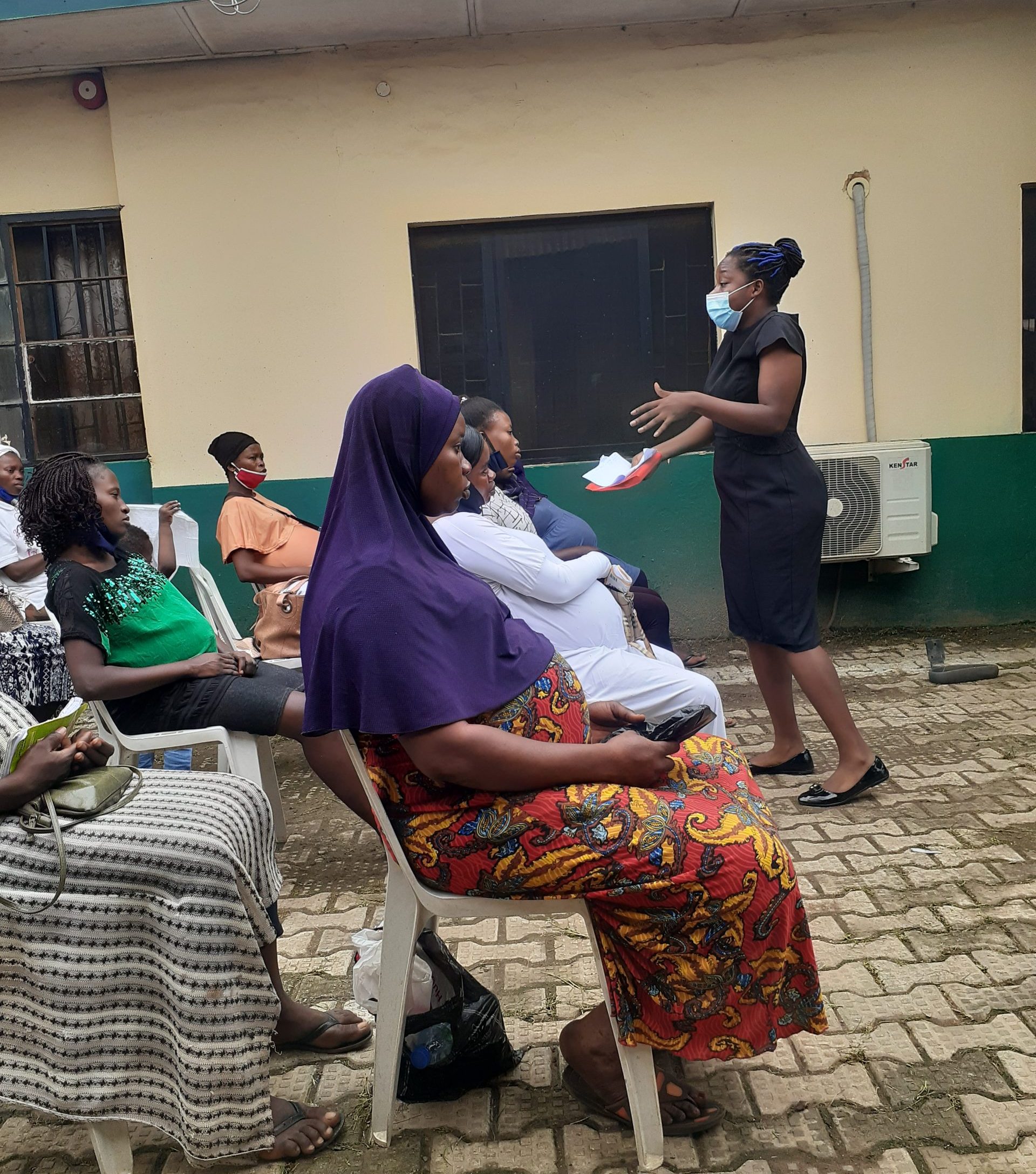Human Immunodeficiency Virus (HIV) in pregnant women has become an increasingly important focus of HIV research because of its role in contributing to the spread of HIV infection majorly among children (Hutchinson & James, 2012). Among the general population, HIV epidemic has remained an important global infection and cause of significant morbidity and mortality. The majority of the new HIV infection occur in the developing world, where women and their children are greatly affected by the consequences of HIV associated disease. Recent figures published by the World Health Organization (WHO, 2016) show that there are 36.7 million people living with HIV and 2.1 million of these are children under the age of 15 who require antiretroviral therapy. This high rate of prevalence of HIV among children correlates with the fact that women of reproductive age are mostly affected and infected with the HIV disease.
There seem to be a gradual and steady decline in trend of HIV prevalence among women attending antenatal clinics (ANC) from 5.8% in 2001 through 5.0% in 2003 to 4.1% in 2005 and 4.1% in 2010 (Federal Ministry of Health, 2012). The challenges in the prevention of mother to child transmission centre on scaling up services to meet the current recommendations of universal antenatal testing in areas of high HIV prevalence and antiretroviral therapy for all HIV positive pregnant women. Access to antenatal care is variable in resource-limited countries. For example in Nigeria, UNICEF (2010) statistics shows that only 58% of pregnant women received antenatal care and 39% were assisted by skilled birth attendants at delivery in 2008. The international organization explained that there are marked disparities in care by wealth and residence status. Only roughly a quarter of the poorest women and less than half of rural women accessed antenatal care at all, and less than a tenth of the poorest and a third of rural women received skilled care at delivery. Getting money for treatment, concerns that no drugs would be available, and distance to health facilities are commonly reported issues.
While 98% of pregnant women in high-income countries report at least one antenatal visit with a skilled health worker, this figure is at most 68% in the developing world. In resource-limited settings only 35% of pregnant women receive an HIV test and 48% of HIV-positive pregnant women receive effective antiretroviral therapy to prevent mother to child transmission, although this is a significant improvement on the 10% in 2004 (WHO, 2010). In resource-rich countries, the implementation of multiple evidence-based interventions has reduced mother to child transmission of HIV to very low levels.
Managing HIV in pregnant women has implication for curbing the spread of HIV and reducing infant mortality as well as maternal mortality rate. It has been well established that despite significant advances have been made in the prevention of vertical HIV transmission, including the use of single and combination antiretroviral therapy, elective caesarean section as the preferred mode of delivery and the elimination of breast feeding, the prevalence of the problem is still a leading cause of HIV spread in developing countries Nigeria. Without interventions that are informed by research, the menace of HIV in pregnant women will continue to be a mockery to Sustainable Development Goal (SDG) and the “Global Plan” to reduce the number of new HIV infections among children by 90% and to reduce the number of AIDS-related maternal deaths by 50%. Such interventions must not only focus on medical solution, but it must also take cognizance of social factors that can improve access to and optimum use of healthcare facilities and services, including avoidable antenatal care, health education, antiretroviral medications and therapy in a friendly and non-discriminating environment.
Social workers, particularly medical social workers that work in hospital settings (especially in maternal and pediatric wards) play a pivotal role in the context of this topic as care givers. Based on Western model of service which incorporates multi-disciplinary professional teams, social work practice forms part this multi-disciplinary team that provides healthcare services for HIV-infected women. As a part of multi-disciplinary healthcare team, medical social workers often collaborate with other medical professionals such as doctors, nurses, discharge coordinators, administrative staff and physical therapists, to deliver patient-centric care across the care continuum (Payne, 2009). Social work practice sees HIV-infected women and affected children as vulnerable populations that need its professional intervention in many ways. Medical social workers provide a range of preventive and curative interventions (including counseling) in curbing HIV. Hence, the profession seeks knowledge of research to enhance its services to meet the need of these populations. Hence, this study can enhance medical work practice with HIV-infected women and the affected children.
The International Federation of Social Workers (IFSW, 2014) defined social work as:
A practice-based profession and an academic discipline that promotes social change and development, social cohesion, and the empowerment and liberation of people. Principles of social justice, human rights, collective responsibility and respect for diversities are central to social work. Underpinned by theories of social work, social sciences, humanities and indigenous knowledge’s, social work engages people and structures to address life challenges and enhance wellbeing.
As early as 1981, social workers in hospitals and medical settings began offering specialized group and individual therapy to help AIDS patients deal with their illness and grief (Collins, 1983). The social work response went well beyond grief counseling, however. In New York City, social workers advocated for housing and support for homeless persons with AIDS (Kolata, 1988). Pioneering social workers such as Michael Shernoff and Luis Palacios-Jimenez, who developed educational materials that eroticized safer sex for gay and bisexual men, were also active in early prevention efforts with marginalized groups (Shernoff, 1990).
However, in the first decade of the epidemic, the profession fell short in preparing most social workers to address the crisis. A 1988 survey of practicing social workers uncovered significant gaps in their knowledge of HIV/AIDS and revealed that nearly three quarters of the respondents felt they had no professional reasons or motivations for being knowledgeable about HIV/AIDS (Peterson, 1991). Recognizing that the spread of the epidemic meant that social workers in diverse settings would encounter individuals affected by HIV/AIDS, Peterson implored schools of social work to provide all students with information about AIDS and how it may affect different client populations. The National Association of Social Workers (NASW) also called on social workers to educate themselves about AIDS, promoting a theme of “AIDS: We Need to Know. We Need to Care for” at its annual Social Work Month public service campaign in 1988 and publishing a report of the same name (Stoesen, 2005).
The social work profession is largely concerned with facilitating and promoting empowerment and advancing the notion of people as agents of their own development. Intervention that provides knowledge, which simplifies and demystifies issues and helps to create solutions, is in itself empowering. Given the magnitude of the impact of HIV–AIDS, Sogren, Jones, Nathaniel and Cameron-Padmore (2012) argue that there is a need to reconfigure social work education in order to ensure that practice is effective in bringing about the requisite social transformation and attitudinal change to reduce stigma and discrimination, to support people living with HIV and to engender a renewed respect and value for life and living.
According to Orner (2006), the majority of caregivers of people living with HIV in Sub-Sahara Africa are women. Care giving is stressful and often associated with physical, social and emotional consequences (UNAIDS, 2004). The impact on caregivers could be enormous, leading to high level of stress and manifesting as anxiety and/or depression. These symptoms could be debilitating and capable of affecting the care, considering the poor psychiatric care services in many HIV/AIDS endemic countries.
In many African countries with continued increase in HIV prevalence, people living with the disease do not have sufficient resources to afford care (Akintola, 2004). The diminished capacity of many countries’ health sectors means having people with HIV cared for at home. Home based care, became more appealing to governments than treating them at hospital. It is also important to note that, being cared for at home, a person with HIV may be in a more ready position to work or look after family members for short periods of time while the primary earners work. The primary caregivers provide practical support (e.g. shopping, housekeeping, bathing, feeding, etc.) and as symptoms worsen they are likely to take on more clinical roles such as keeping track of medication, giving injections, inserting catheters and cleaning wounds (Folkman, Chesney & Christopher-Richards, 1994). Unlike formal caregivers and volunteers, these people are on call 24 hours a day, thus they are faced with many challenges. Caring not only increases the financial burden on these carers (Ala, 2001), but it also produces the additional strain of stigmatization (Turner, Catania & Gagnon, 1994), as well as distressing emotions, relationship difficulties, somatic symptoms and grief (Pakenham, Dadds & Terry, 1995).
There is no doubt that social workers can play active role in management of HIV in pregnant women by promoting voluntary counseling and testing, home based and palliative care, community sensitizations and other services that can help infected pregnant women live a healthy live and prevent mother-to-child transmission of HIV. Medical social workers in Nigeria need to take their place as a member of healthcare team that provide healthcare services to HIV-infected pregnant women. This notion is based on the realization that healthcare service has evolved rapidly based on Western model of service which incorporates multi-disciplinary professional teams. Social work practice forms part of this multi-disciplinary team that provides healthcare services for people living with HIV. As a part of multi-disciplinary healthcare team, medical social workers often collaborate with other medical professionals such as doctors, nurses, discharge coordinators and administrative staff, to deliver patient-centric care across the care continuum (Payne, 2002).
Access to effective preventive mother-to-child-transmission of HIV in Nigeria is limited by barriers such limited male involvement, quality of healthcare services provide in public health institutions, stigmatization and discrimination as demonstrated in this study. Social workers have the relevant knowledge, skills and a long tradition of enabling access to services through addressing structural barriers and facilitating inclusion. Social workers can use their skills of advocacy and public enlightenment to educate the public and promote welfare of people living with HIV, particularly infected pregnant women. Social workers also need to conduct research that can help them to develop intervention strategies to help HIV infected women live a better live and prevent mother-to-child transmission of HIV.
About author: Ariyo Ayodele (BSc. Social Work Lagos) is a Medical Social Worker and Political Analyst.
REFERENCES
Akintola, O. (2004). A Gendered Analysis of the Burden of Care on Family and Volunteer Caregivers in Uganda and South Africa. Health Economics and HIV/AIDS Research Division (HEARD), University of KwaZulu/Natal
Ala, J. (2001). Assessing willingness to care for persons with aids: Validation of new measures. Research of Social Work Practice, 11 (1), 118-130.
Orner, P. (2006). Psychosocial Impacts on Caregivers of People Living with AIDS. AIDS Care, 18(3):236–240
Payne, M. (2009) Critical Practice in Social Work. Hampshire: Palgrave Macmillan
Federal Ministry of Health (2012). National Reproductive and Health Survey Plus. Abuja: Author.
Folkman, S., Chesney, M.A. & Christopher-Richards, A. (1994): Stress and Coping in Caregiving of Partners of Men with AIDS. Psychiatric Manifestations of HIV Diseases, 17: 35-53.
Turner, H.A., Catania, J.A. & Gagnon, J. (1994): The Prevalence of Informal Caregiving to Persons with AIDS in the United States: Caregivers Characteristics and their Implications. Social Sciences and Medicines, 38(11), 1543- 1552
World Health Organization (2016). Global Health Observatory Data. Retrieved from: http://www.who.int/gho/hiv/en/
UNICEF (2012). Program Status According to PMTCT Prongs: Zambia, Preventing Mother-to-Child Transmission (PMTCT) of HIV. Retrieved from http://www.unicef.org/aids/index_ preventionyoung.html



